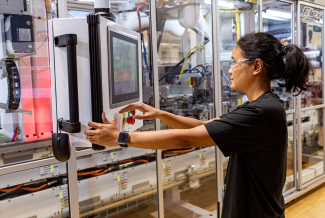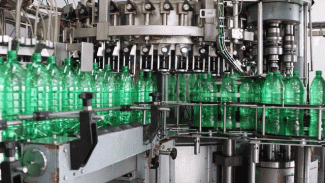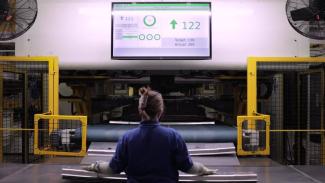
Production Monitoring with Manufacturing Automation
In the last couple of years, unprecedented disruptions in manufacturing have resulted in lots of shifting and pivoting on the plant floor. It may come with little surprise that manufacturing leaders now more than ever are striving for ways to improve their processes to drive greater throughput and reduce costs. This ongoing desire for both cost-cutting and increased efficiency is prime for manufacturers who are looking to adapt more automation technology in the realm of Industry 4.0 for successful outcomes. In this article, we’ll explore the rise of manufacturing automation in production monitoring and we’ll also outline how to successfully implement different types of automation into your internal processes. We'll also provide resources such as our State of Smart Manufacturing Report to help you get started in your digital transformation journey. In our 6th annual study, nearly 300 manufacturing leaders shared how they use technology in their organizations today and the urgent challenges in production monitoring they need to address in order to succeed.
State of Smart Manufacturing
To what extent is your organization using smart manufacturing today? What are the top barriers to smart manufacturing adoption? In what smart technologies do you plan to increase your investments in the future?
Download the State of Smart Manufacturing Report for answers to these questions (and more) from over 300 manufacturers.
Get Report
What are the Benefits of Manufacturing Automation in Production Monitoring
Automated production monitoring software provides solutions for businesses looking to expand and improve their assembly line. It provides the following capabilities:
- Connectivity – Connect the plant floor to create a closed-loop system that measures productivity and other equipment KPIs in real time. A truly connected closed-loop system delivers accurate visibility in manufacturing. By connecting and automating your production monitoring, you’ll gain powerful analytics that will deliver proactive insights.
- Automation – Automate data capture to improve the efficiency of information and provide insights into the quality of manufacturing. Armed with these insights, your operators, managers, and executives can develop tactical and strategic plans to improve processes and achieve operational excellence.
- Tracking – Businesses can track data for instant feedback with clear visualizations of their production metrics in real time. Visualization may take the form of interactive dashboards for direct operator interface, robust reporting customized to each user, or autonomous or semi-autonomous actions to control quality and performance.
- Analysis – Analyze operations to identify bottlenecks and pinpoint problem areas for continuous production improvements. This analysis can improve overall equipment effectiveness, enhance scheduling and inventory practices, reduce downtime, and increase productivity per employee.
How to Successfully Implement Automated Production Monitoring Software
We have pulled together five steps for production monitoring success, following these should help your business implement PLEX automated software:
- Rally the Troops. Identify your core team and its leaders. These champions will be responsible for defining the vision of how production monitoring becomes a jumping off point for Smart Manufacturing in a way that works for their needs.
- Identify Pain Points. Start pragmatically with the lines, areas, or processes within your business that cause the biggest headaches.
- Target Your KPIs. Identify what is most important to your business right now. Is it improved production cycles, less downtime, or improved quality, or all three? Determine what you will use to achieve this success and be open to new measurements you may not have considered.
- Start Monitoring. Connect to your existing machines and equipment to close the loop in your production cycle. Once you’re connected and have real-time visibility, you’ll be able to unleash your businesses’ full potential. Your operators will be empowered to make decisions faster and with greater confidence, which will lead to bottlenecks and microstops becoming a distant memory.
- Keep Checking-in. Use your metrics to your advantage for on-going efficiencies. You may be surprised at the new opportunities that open after a few rounds of improvements.
Plex Smart Manufacturing Platform doesn’t just offer manufacturing automation, it also includes Enterprise Resource Planning (ERP), Manufacturing Execution Systems (MES), Supply Chain Planning (SCP), Quality Management Systems (QMS), and Asset Performance Management (APM).




